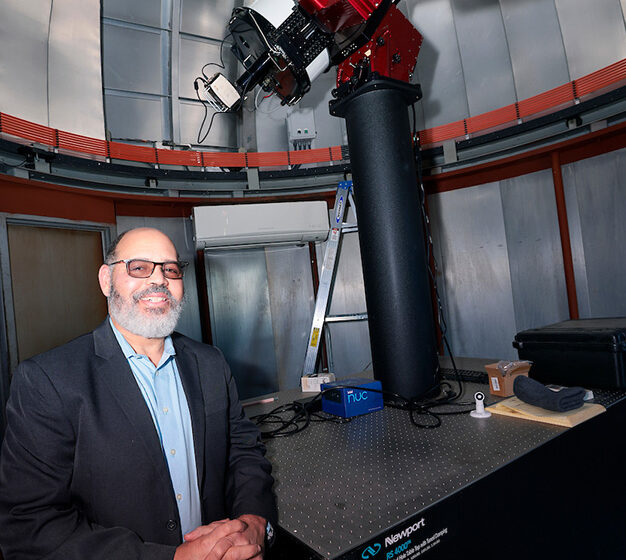FAMU Physics Professor Discusses Solar Eclipse

As Americans prepare for Monday’s solar eclipse, Florida A&M University (FAMU) Physics Professor Ray O’Neal, Ph.D., explained the lunar phenomenon and some do’s and don’ts for a great experience.
Florida will not be in either the path of totality or the off-center shadow, so those in the area won’t notice the significant darkening of the sky. The eclipse could be visible in Tallahassee from 1:42 p.m. to 4:17 p.m., with maximum viewing at 3 p.m. Monday, according to timeanddate.com.
From Tallahassee, observers might see the crescent or the “bite” the moon takes out of the sun, said O’Neal.
While Florida is not in the path of totality for viewing the eclipse, O’Neal explained the significance of participating in any way you can.
“If you ever have the opportunity to see a total solar eclipse in totality, you really should take advantage of it,” said O’Neal, who has taught at FAMU since 1999. Before that, he served as staff astrophysicist at the Harvard-Smithsonian Center for Astrophysics in Cambridge, Massachusetts. He traveled to Columbia, South Carolina, to photograph a total eclipse in 2017.
O’Neal urged observers to come to the Monday’s event prepared. He suggested making a panel with a pinhole in it, which can be used to project an image of the eclipse onto the ground.
“I’m always amazed at how well this method works,” he said. “Even if you take your fist and you make a pinhole… you can sometimes project a reasonably good image of the eclipse unto the ground.”
When the moon is closer than its usual distance, the disc of the sun is entirely blocked from the observers as opposed to an annular eclipse, which occurs when the moon is farther from the Earth than its average distance.
“Because the sun gets blocked out, you can see things you can’t normally see,” he said. “You can see the corona of the sun. The hot ionized gas that surrounds the Sun which also flows away from the sun as the solar wind.”
During the eclipse, the streaming of the solar wind is visible.
“You can see the larger-scale magnetic structures of the corona that we believe are actually responsible for driving the solar wind,” said O’Neal, who will be in class during the eclipse since the University is open for business and will be holding classes as usual.
DO’s and DON’Ts
DON’T LOOK DIRECTLY.
Looking at the sun with no eye protection usually is not a great idea, but it is especially dangerous during an eclipse. Do not look at the eclipse without special viewing equipment.
O’Neal explains that the intensity of the sunlight, being focused by the lens of your eye, may put so much intense light in your retina that it may cause damage to the retina.
However, once the sky darkens and the moon completely covers the solar disc, it is safe to look, which he describes as breathtaking.
DO UTILIZE TECHNOLOGY
O’Neal encourages those who aren’t in areas of totality to still participate in viewing the eclipse. There will be several live broadcasts showing the eclipse. NASA will have a simulcast of their eclipse observations.
He also mentioned that many telescopes will allow for viewing as well.
Unfortunately, the FAMU telescope is not optimized for solar viewing as it would damage the optics. The light would be too intense.
The Slooh Network also has many telescopes that will be trained on the sun and cast live views of the eclipse.
He also encourages those in areas of totality to look out for comet Pons-Brooks, which will then be closest to the sun on April 21.



